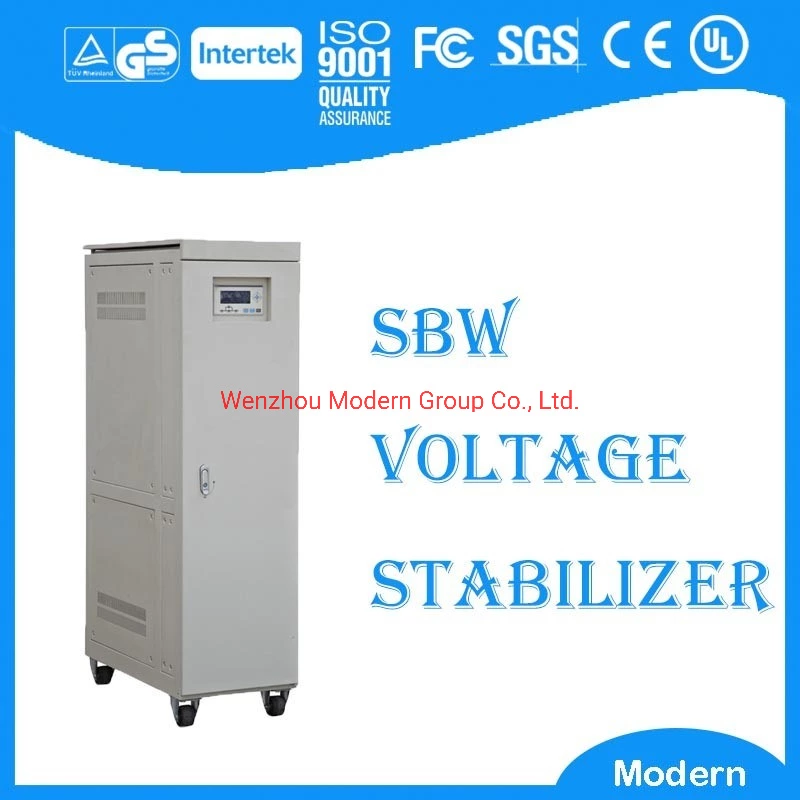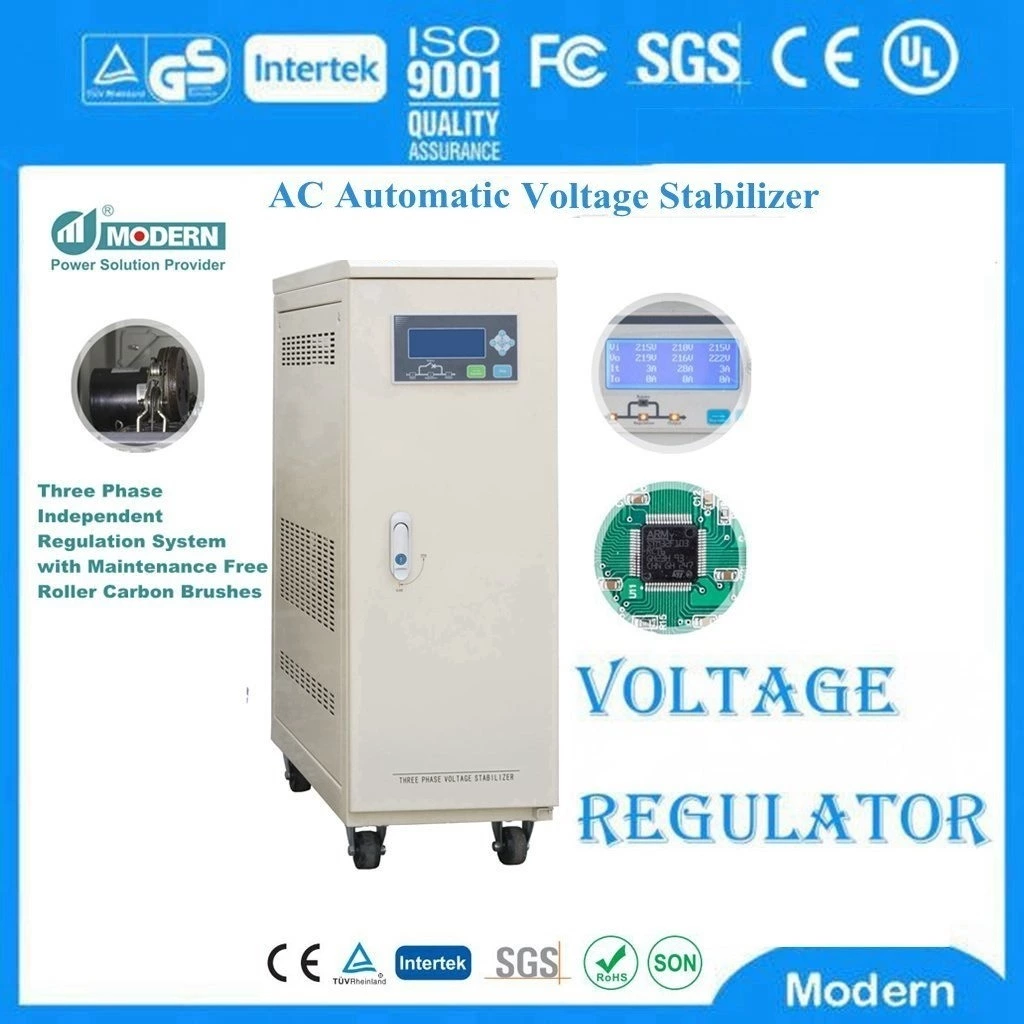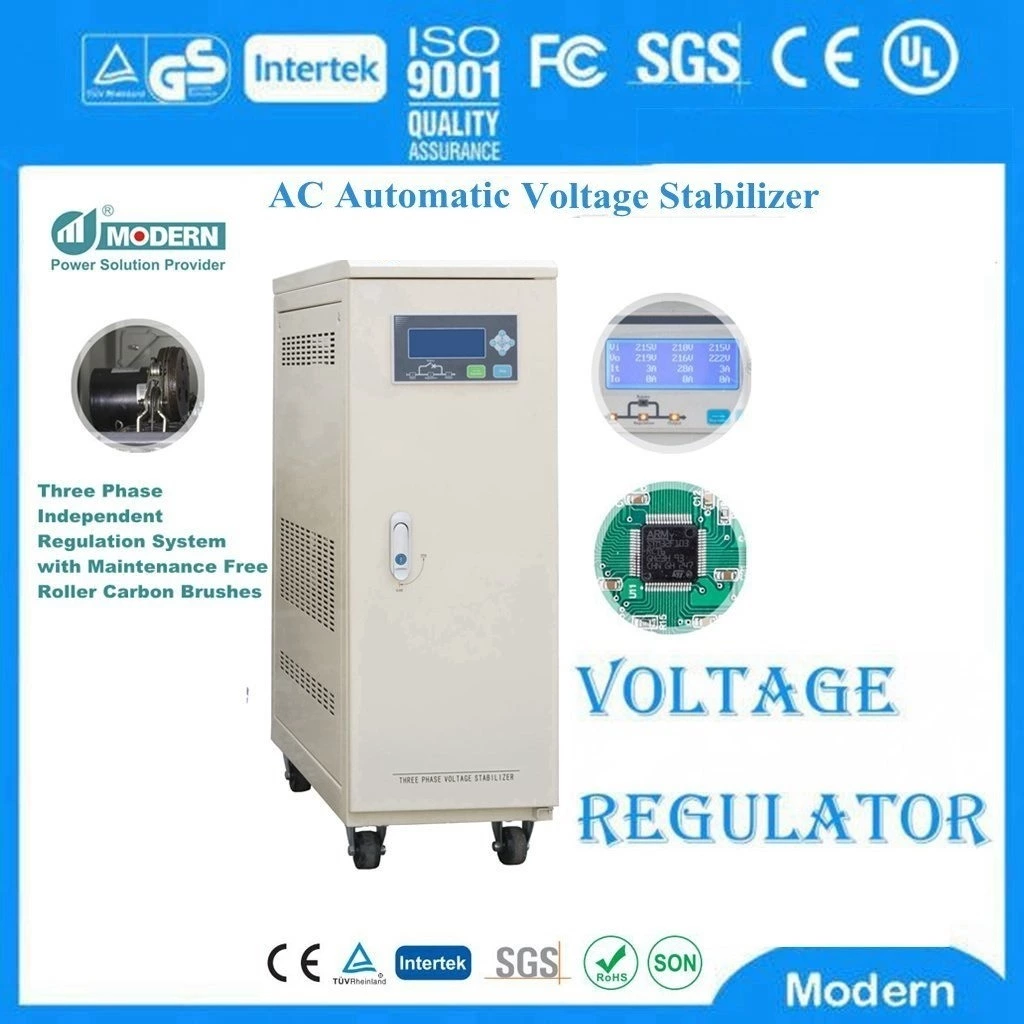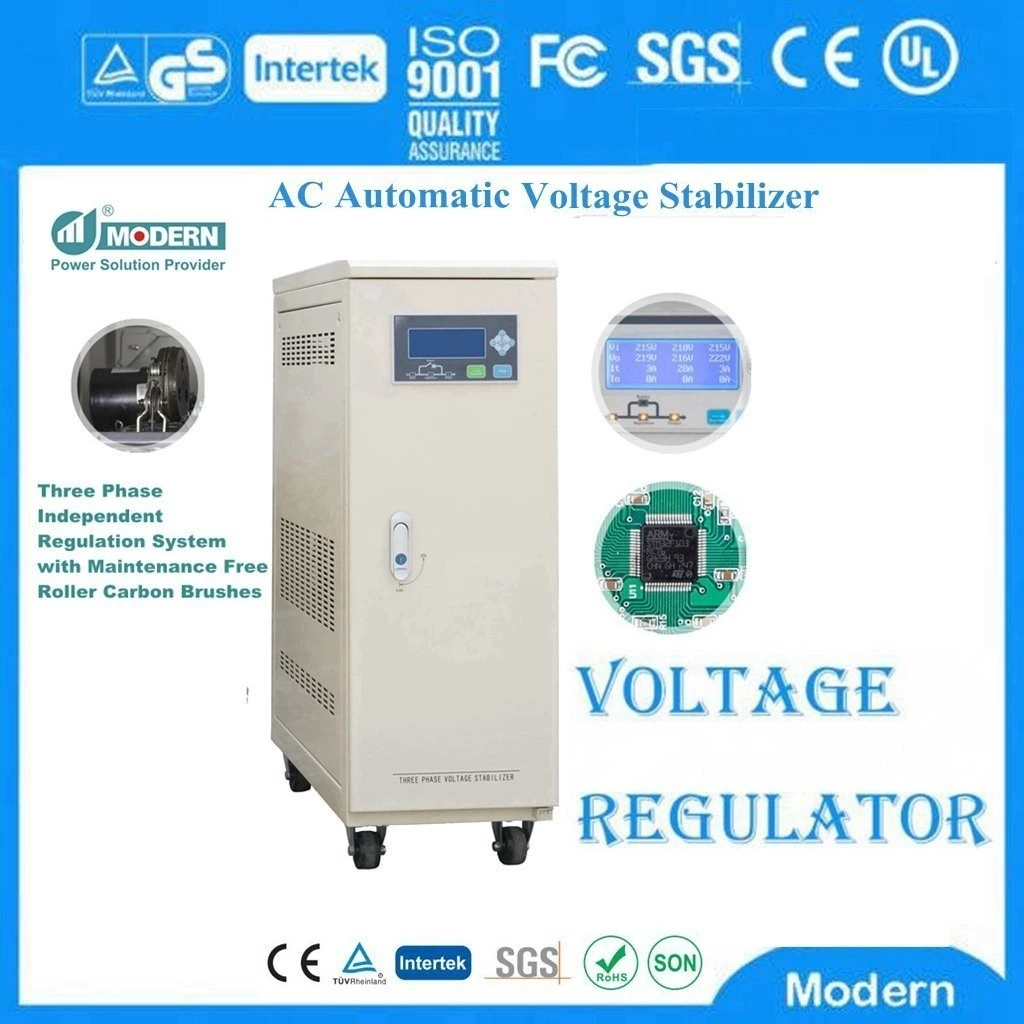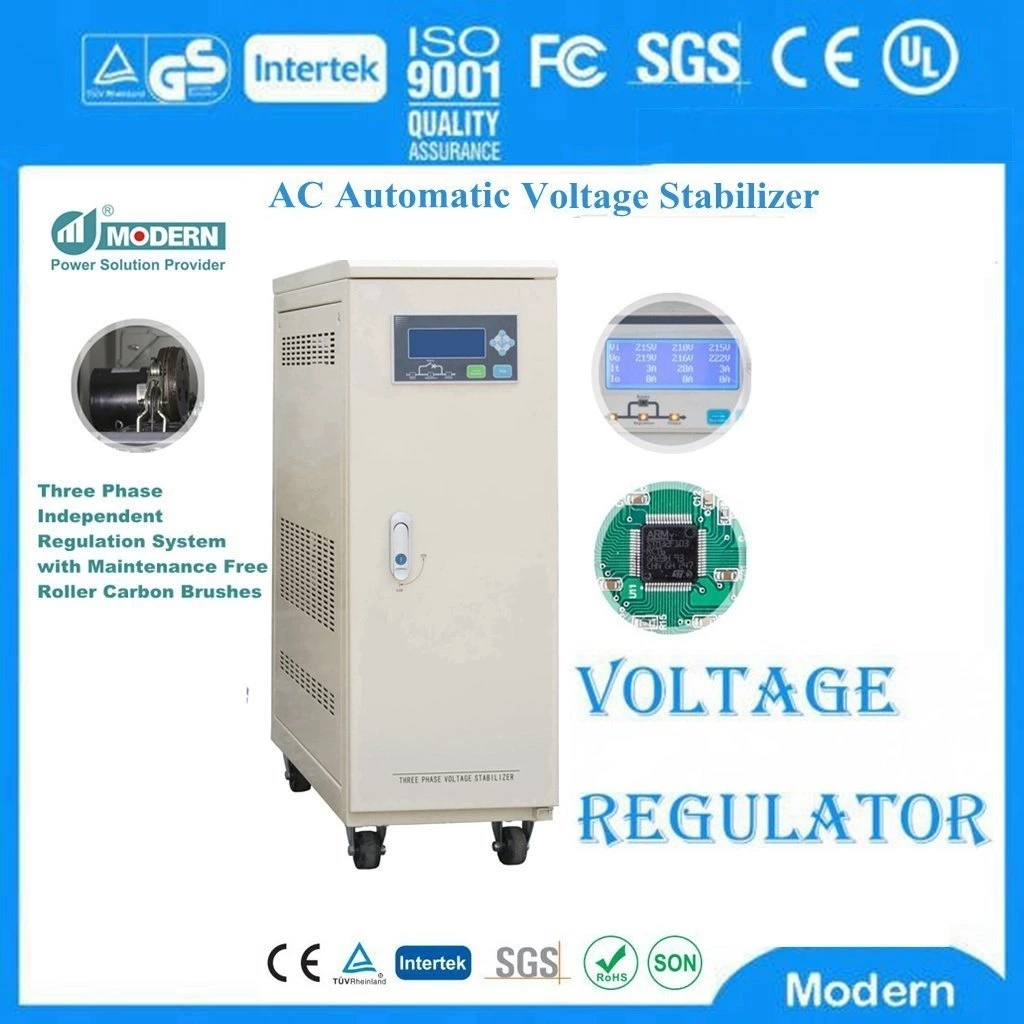Harmonics Knowledge
Causes
In a normal alternating current power system, the voltage varies sinusoidally at a specific frequency, usually 50 or 60 hertz. When a linear electrical load is connected to the system, it draws a sinusoidal current at the same frequency as the voltage (though usually not in phase with the voltage).
When a non-linear load, such as a rectifier, is connected to the system, it draws a current that is not necessarily sinusoidal. The current waveform can become quite complex, depending on the type of load and its interaction with other components of the system. Regardless of how complex the current waveform becomes, as described through Fourier series analysis, it is possible to decompose it into a series of simple sinusoids, which start at the fundamental power system frequency and occur at integer multiples of the fundamental frequency
Effects of Harmonics on Power System
If not properly designed or rated, electrical equipment will often malfunction when harmonics are present in an electrical system.
Most people don't realize that harmonics have been around a long time. Since the first AC generator went online more than 100 years ago, electrical systems have experienced harmonics. The harmonics at that time were minor and had no detrimental effects.
Basic concepts
A pure sinusoidal voltage is a conceptual quantity produced by an ideal AC generator built with finely distributed stator and field windings that operate in a uniform magnetic field. Since neither the winding distribution nor the magnetic field are uniform in a working AC machine, voltage waveform distortions are created, and the voltage-time relationship deviates from the pure sine function. The distortion at the point of generation is very small (about 1% to 2%), but nonetheless it exists. Because this is a deviation from a pure sine wave, the deviation is in the form of a periodic function, and by definition, the voltage distortion contains harmonics.
When a sinusoidal voltage is applied to a certain type of load, the current drawn by the load is proportional to the voltage and impedance and follows the envelope of the voltage waveform. These loads are referred to as linearloads (loads where the voltage and current follow one another without any distortion to their pure sine waves). Examples of linear loads are resistive heaters, incandescent lamps, and constant speed induction and synchronous motors.
In contrast, some loads cause the current to vary disproportionately with the voltage during each half cycle. These loads are classified as nonlinear loads, and the current and voltage have waveforms that are nonsinusoidal, containing distortions, whereby the 60-Hz waveform has numerous additional waveforms superimposed upon it, creating multiple frequencies within the normal 60-Hz sine wave. The multiple frequencies are harmonics of the fundamental frequency.
Normally, current distortions produce voltage distortions. However, when there is a stiff sinusoidal voltage source (when there is a low impedance path from the CVCF & VVVF Power Source, which has sufficient capacity so that loads placed upon it will not effect the voltage), one need not be concerned about current distortions producing voltage distortions.
Examples of nonlinear loads are battery chargers, electronic ballasts, variable frequency drives, and switching mode power supplies. As nonlinear currents flow through a facility's electrical system and the distribution-transmission lines, additional voltage distortions are produced due to the impedance associated with the electrical network. Thus, as electrical power is generated, distributed, and utilized, voltage and current waveform distortions are produced.
Power systems designed to function at the fundamental frequency, which is 60-Hz in the United States, are prone to unsatisfactory operation and, at times, failure when subjected to voltages and currents that contain substantial harmonic frequency elements. Very often, the operation of electrical equipment may seem normal, but under a certain combination of conditions, the impact of harmonics is enhanced, with damaging results.
Motors
There is an increasing use of variable frequency drives (VFDs) that power electric motors. The voltages and currents emanating from a VFD that go to a motor are rich in harmonic frequency components. Voltage supplied to a motor sets up magnetic fields in the core, which create iron losses in the magnetic frame of the motor. Hysteresis and eddy current losses are part of iron losses that are produced in the core due to the alternating magnetic field. Hysteresis losses are proportional to frequency, and eddy current losses vary as the square of the frequency. Therefore, higher frequency voltage components produce additional losses in the core of AC motors, which in turn, increase the operating temperature of the core and the windings surrounding in the core. Application of non-sinusoidal voltages to motors results in harmonic current circulation in the windings of motors. The net rms current is [I.sub.rms] = [square root of [([I.sub.1]).sup.2] + [([I.sub.2]).sup.2] + [([I.sub.3]).sup.2] +] ..., where the subscripts 1, 2, 3, etc. represent the different harmonic currents. The [I.sub.2]R losses in the motor windings vary as the square of the rms current. Due to skin effect, actual losses would be slightly higher than calculated values. Stray motor losses, which include winding eddy current losses, high frequency rotor and stator surface losses, and tooth pulsation losses, also increase due to harmonic voltages and currents.
The phenomenon of torsional oscillation of the motor shaft due to harmonics is not clearly understood, and this condition is often disregarded by plant personnel. Torque in AC motors is produced by the interaction between the air gap magnetic field and the rotor-induced currents. When a motor is supplied non-sinusoidal voltages and currents, the air gap magnetic fields and the rotor currents contain harmonic frequency components.
The harmonics are grouped into positive (+), negative (-) and zero (0) sequence components. Positive sequence harmonics (harmonic numbers 1,4,7,10,13, etc.) produce magnetic fields and currents rotating in the same direction as the fundamental frequency harmonic. Negative sequence harmonics (harmonic numbers 2,5,8,11,14, etc.) develop magnetic fields and currents that rotate in a direction opposite to the positive frequency set. Zero sequence harmonics (harmonic numbers 3,9,15,21, etc.) do not develop usable torque, but produce additional losses in the machine. The interaction between the positive and negative sequence magnetic fields and currents produces torsional oscillations of the motor shaft. These oscillations result in shaft vibrations. If the frequency of oscillations coincides with the natural mechanical frequency of the shaft, the vibrations are amplified and severe damage to the motor shaft may occur. It is important that for large VFD motor installations, harmonic analyses be performed to determine the levels of harmonic distortions and assess their impact on the motor.
Transformers
The harmful effects of harmonic voltages and currents on transformer performance often go unnoticed until an actual failure occurs. In some instances, transformers that have operated satisfactorily for long periods have failed in a relatively short time when plant loads were changed or a facility's electrical system was reconfigured. Changes could include installation of variable frequency drives, electronic ballasts, power factor improvement capacitors, arc furnaces, and the addition or removal of large motors.
Application of nonsinusoidal excitation voltages to transformers increase the iron lesses in the magnetic core of the transformer in much the same way as in a motor. A more serious effect of harmonic loads served by transformers is due to an increase in winding eddy current losses. Eddy currents are circulating currents in the conductors induced by the sweeping action of the leakage magnetic field on the conductors. Eddy current concentrations are higher at the ends of the transformer windings due to the crowding effect of the leakage magnetic fields at the coil extremities. The eddy current losses increase as the square of the current in the conductor and the square of its frequency. The increase in transformer eddy current loss due to harmonics has a significant effect on the operating temperature of the transformer. Transformers that are required to supply power to nonlinear loads must be derated based on the percentages of harmonic components in the load current and the rated winding eddy current loss.
One method of determining the capability of transformers to handle harmonic loads is by k factor ratings. The k factor is equal to the sum of the square of the harmonic currents multiplied by the square of the frequencies.
k = [([I.sub.1]).sup.2]([1.sup.2]) + [([I.sub.2]).sup.2]([2.sup.2]) + [([I.sub.3]).sup.2]([3.sup.2]) + . . . + [([I.sub.n]).sup.2]([n.sup.2]).
where [I.sub.1] = ratio of fundamental current to total rms current, [I.sub.2] = ratio of second harmonic current to total rms current, [I.sub.3] = ratio of third harmonic current to total rms current, etc., and 1,2,3, ... n are harmonic frequency numbers. The total rms current is the square root of the sum of square of the individual currents.
By providing additional capacity (larger-size or multiple winding conductors), k factor rated transformers are capable of safely withstanding additional winding eddy current losses equal to k times the rated eddy current loss. Also, due to the additive nature of triplen harmonic (3, 9, 15, etc.) currents flowing in the neutral conductor, k rated transformers are provided with a neutral terminal that is sized at least twice as large as the phase terminals.
Example: A transformer is required to supply a nonlinear load comprised of 200A of fundamental (60 Hz), 30A of 3rd harmonic, 48A of 5th harmonic and 79A of 7th harmonic. Find the required k factor rating of the transformer:
Total rms current, I = [square root of [([I.sub.1]).sup.2] + [([I.sub.3]).sup.2] + [([I.sub.5]).sup.2] + [([I.sub.7]).sup.2]]
Total rms current, I = [square root of [(200).sup.2] + [(30).sup.2] + [(48).sup.2] + [(79).sup.2]] = 222.4A
[I.sub.1] = 200 / 222.4 = 0.899
[I.sub.3] = 30 / 222.4 = 0.135
[I.sub.5] = 48 / 222.4 = 0.216
[I.sub.7] = 79 / 222.4 = 0.355
k = [(0.899).sup.2][(1).sup.2] + [(0.135).sup.2] [(3).sup.2] + [(0.216).sup.2]([5).sup.2] + [(0.355).sup.2][(7).sup.2] = 8.31
To address the harmonic loading in this example, you should specify a transformer capable of supplying a minimum of 222.4A with a k rating of 9. Of course, it would be best to consider possible load growth and adjust the minimum capacity accordingly.
The photo (on page 33) shows one of the things that can happen when large nonlinear loads are present in a transformer. In this case, the nonlinear loads caused a substantial temperature rise. The unit had been installed to serve an online UPS source that produced high harmonic currents in the lines coming from the transformer. The darkened areas of the coils are due to the effect of heat caused by excess eddy current losses in the transformer's windings. Very often, the damage to the coils in a transformer is not known until a failure occurs.
Capacitor banks
Many industrial and commercial electrical systems have capacitors installed to offset the effect of low power factor. Most capacitors are designed to operate at a maximum of 110% of rated voltage and at 135% of their kvar ratings. In a power system characterized by large voltage or current harmonics, these limitations are frequently exceeded, resulting in capacitor bank failures. Since capacitive reactance is inversely proportional to frequency, unfiltered harmonic currents in the power system find their way into capacitor banks, These banks act like a sink, attracting harmonic currents, thereby becoming overloaded.
A more serious condition, with potential for substantial damage, occurs as a result of harmonic resonance. Resonant conditions are created when the inductive and capacitive reactances become equal in an electrical system. Resonance in a power system may be classified as series or parallel resonance, depending on the configuration of the resonance circuit. Series resonance produces voltage amplification and parallel resonance causes current multiplication within an electrical system. In a harmonic rich environment, both types of resonance are present. During resonant conditions, if the amplitude of the offending frequency is large, considerable damage to capacitor banks would result. And, there is a high probability that other electrical equipment on the system would also be damaged.
Fig. 1 shows a typical power system incorporating a distribution transformer ([T.sub.1]) and two variable frequency drives, each serving a 500hp induction motor. Assume that transformer [T.sub.1] is rated 3 MVA, 13.8kV-480V, 7.0% leakage reactance. With a 1000kvar capacitor bank installed on the 480V bus, the following calculations examine the power system for resonance. Where the secondary current of the 3MVA transformer is based at a potential of 480V, and neglecting utility source impedance, the transformer reactance at 7% results in an inductive reactance ([X.sub.L]) of 0.0161 ohms as determined from the following calculations, based upon a delta electrical configuration [ILLUSTRATION FOR FIGURE 2 AND 3 OMITTED]:
Transformer line current ([I.sub.L]) = [VA transformer rating] / [([square root of 3])([V.sub.L])]
([I.sub.L]) = [(3)[(10).sup.6]] / [([square root of 3])(480)] = 3608A
Note: impedance values are calculated using the actual winding current ([I.sub.w]) and winding voltage ([V.sub.w]).
[I.sub.w] = [I.sub.L] / [square root of 3 ] = 3608 / [square root of 3] = 2083A
Winding voltage ([V.sub.w]) = line voltage ([V.sub.L]) = 480V
Percent reactance (7%) = ([I.sub.w])([X.sub.L]) / ([V.sub.w])
Inductive reactance ([X.sub.L]) = (.07)([V.sub.w]) / ([I.sub.w]) = (.07)(480) / (2083) [X.sub.L] = 0.0161 ohms
Inductance (L) = [X.sub.L] / 2[Pi]f = 0.0161 / (2)(3.14)(60) = (0.428)[(10).sup.-4] henry
For a delta connected capacitor, the following calculations are applicable:
Line current to capacitor bank ([I.sub.L]) = (capacity in var) / ([square root of 3])([V.sub.L]) [I.sub.L] = (1000)[(10).sup.3] / ([square root of 3])(480) = 1203A
Capacitor current ([I.sub.c]) = [I.sub.L] / [square root of 3] = 1203 / 1.732 = 694.6A
Capacitive reactance ([X.sub.c]) = [V.sub.L] / [I.sub.c] = 480 / 694.4 = 0.691 ohm Capacitance (C) = 1 / 2[Pi]f[X.sub.c] = 1 / (2)(3.14)(60)(0.691)= (38.4)[(10).sup.-4] farad
Resonance frequency ([f.sub.R]) = 1 / 2[Pi][square root of (L)(C)]
([f.sub.R])= 1 / (2)(3.14) [[square root of (0.428)[(10).sup.-4] (38.4)[(10.)sup. -4]]]
([f.sub.R]) = 1 / (6.28) [[square root of (0.428)(38.4)[(10).sup.-8]]] = 393 Hz
A different derivation must be carried out when using a wye-connected transformer and a wye-connected capacitor bank. The wye-connected arrangement is the one normally used when a secondary neutral is required. The following equations are applicable for wye configurations ([ILLUSTRATION FOR FIGURE 4 AND 5 OMITTED], on page 40):
For the transformer:
Transformer winding voltage ([V.sub.w]) = line voltage ([V.sub.L]) / [square root of 3] = 480 / [square root of 3] = 277V
Winding current ([I.sub.w]) = transformer capacity (VA) / ([V.sub.L])([square root of 3])
[I.sub.w] = (3)[(10).sup.6] / (480)([square root of 3])= 3608A
Inductive reactance ([X.sub.L]) = (.07)([V.sub.w]) / ([I.sub.w]) = (.07)(277) / (3608)
[X.sub.L] = 0.00537 ohms
Inductance (L) = [X.sub.L] / 2[Pi]f = 0.00537 / (2)(3.14)(60) = (14.3)[(10).sup.-6] henry
For the capacitor bank:
Capacitor bank current flow ([I.sub.c]) = (capacity in var) / ([square root of 3])([V.sub.L])
[I.sub.c] = (1000)[(10).sup.3] / ([square root of 3])(480) = 1203A
Capacitor voltage ([V.sub.c]) = line voltage ([V.sub.L]) / [square root of 3] = 480 / [square root of 3] = 277V
Capacitive reactance ([X.sub.c]) = [V.sub.c] / [I.sub.c] = 277 / 1203 = 0.23 ohm
Capacitance (C) = 1 / 2[Pi]f[X.sub.c] = 1 / (2)(3.14)(60)(0.23) = 0.0115 farad
Resonance frequency ([f.sub.R]) = 1 / 2[Pi][square root of (L)(C)]
([f.sub.R]) = 1 / (2)(3.14)[[square root of (14.3)[(10).sup.-6]] (0.0115)]
([f.sub.R]) = 1 / (6.28)[[square root of (0.16445)[(10).sup.-6]]] = 393 Hz
Note that the resonance frequency remains the same, whether for a delta-type circuit or for a wye-type circuit. However, this situation would change should the transformer be one type circuit and the capacitor another type circuit.
The system would therefore be in resonance at a frequency corresponding to the 6.6th harmonic (393/60 = 6.55). This is dangerously close to the 7th harmonic voltage and current produced in variable frequency drives.
The two 500-hp drives draw a combined line current of 1100A (a typical value assuming motor efficiency of 90% and a .9PF). If the current of the 7th harmonic component is assumed to be 1/7 of the fundamental current (typical in drive applications), then [I.sub.7] = 1100 / 7 = 157A. If the source resistance (R) for the transformer and the conductors causes a 1.2% voltage drop based on a 3MVA load flow, then R = (0.92)([10.sup.-3]) ohms. This is because the determination of the inductive reactance ([X.sub.L]) for the wye-connected transformer was 0.00537 ohms. Thus, R = (0.00537)(1.2%) / 7% (transformer leakage reactance) = (0.92)([10.sup.-3]) ohms.
The "Q" or "quality factor" of an electrical system is a measure of the energy stored in the capacitors and inductors in the system. The current amplification factor (CAF) in a parallel resonant circuit (such as where a transformer and a capacitor are in a parallel configuration) is approximately equal to Q. Actually, Q= (2)([Pi]) (maximum energy storage) / (energy dissipation/cycle) as follows:
Q = [(2)([Pi])][(1/2)(L)[([I.sub.M]).sup.2] / [(I).sup.2] (R/f)]
where [I.sub.M] (maximum current) = ([square root of 2])(I), thus,
Q = (2)([Pi])(f)(L) / R = [X.sub.L] / R
where CAF can be considerd Q or [X.sub.L] / R.
For the example, with the two 500-hp drives, CAF equals (7)([X.sub.L]) / R, where 7 is a multiplication factor representing the 7th harmonic (or 7 times the fundamental 60Hz); [X.sub.L] is the reactive impedance at 0.00537; and R = (0.92)([10.sup.-3]) ohms. Thus:
CAF = (7)(.00537) / (0.92)([10.sup.-3]) = 40.86
The resonant current ([I.sub.R]) equals (CAF)([I.sub.7]) = (40.86)(157A)= 6415A. This current circulates between the source and the capacitor bank. The net current in the capacitor bank ([I.sub.Q] is equal to 6527A, which is derived as follows:
([I.sub.Q]) = [square root of [([I.sub.R]).sup.2] + [([I.sub.C]).sup.2]] = [square root of [(6415).sup.2] + [(1203).sup.2]] = 6527A
The value of [I.sub.Q] will seriously overload the capacitors. If the protective device does not operate to protect the capacitor bank, serious damage will occur.
The transformer and the capacitor bank may also form a series resonance circuit and cause large voltage distortions and overvoltage conditions at the 480V bus. Prior to installation of a power factor improvement capacitor bank, a harmonic analysis must be performed to ensure that resonance frequencies do not coincide with prominent harmonic components contained in the voltages and currents.
Cables
The flow of normal 60-Hz current in a cable produces [I.sup.2]R losses and current distortion introduces additional losses in the conductor. Also, the effective resistance of the cable increases with frequency due to skin effect, where unequal flux linkages across the cross section of the cable causes the AC current to flow on the outer periphery of the conductor. The higher the frequency of the AC current, the greater this tendency. Because of both the fundamental and the harmonic currents that can flow in a conductor, it is important to make sure a cable is rated for the proper current flow.
A set of calculations should be carried out to determine a cable's ampacity level. To do so, the first thing is to evaluate the skin effect. Skin depth relates to the penetration of the current in a conductor and varies inversely as the square root of the frequency, as follows:
Skin depth ([Delta]) = S / [square root of f]
where "S" is a proportionality constant based on the physical characteristics of the conductor and its magnetic permeability and "f" is the frequency.
If [R.sub.dc] is the DC resistance of a conductor, the AC resistance ([R.sub.f]) at frequency "f" is given by the expression,
[R.sub.f] = (K)([R.sub.dc])
The value of K is determined from the table shown on page 42. Its value corresponds to the calculated value of the skin effect resistance parameter (X), where X can be calculated as follows:
X = 0.0636 [square root of f[Mu] / [R.sub.dc]]
or this calculation, 0.0636 is a constant for copper conductors, "f" is the frequency, [R.sub.dc] is the DC resistance per mile of the conductor, and [Mu] is the permeability of the conducting material. The permeability for nonmagnetic materials, such as copper, is approximately equal to 1 and this is the value used. Tables or graphs that contain values of X and K are normally available from conductor manufacturers. The value of K is a multiplying factor that is to be multiplied by the normal cable resistance.
Example: Find the 60-Hz and 300-Hz AC resistances of a 4/0 copper conductor that has a DC resistance ([R.sub.dc]) of 0.276 ohm per mile. Using the following equation
X = 0.0636[square root of f[Mu] /[R.sub.DC]] We find that [X.sub.60] = (.0636)[[square root of (60)(1) / .276]] = 0.938. And, the value of K from the table, when [X.sub.60] = 0.938, is approximately 1.004. Thus, the conductor resistance per mile at 60 Hz = (1.004)(0.276) = 0.277 ohm.
For 300 Hz, [X.sub.300] = (.0636) [[square root of (300)(1) / .276]] = 2.097. For this condition, the value of K, based on [X.sub.300] = 2.097 from the table, is approximately 1.092. And, the conductor resistance per mile at 300 Hz = (1.092)(0.276) = 0.301 ohm.
The ratio of resistance, which is also called the skin effect ratio (E), based on the 300 Hz resistance to the 60 Hz resistance = .301 / .277 = 1.09. As can be seen; E = [X.sub.n] / [X.sub.60]
A conservative expression for the current rating factor (q) for cables that carry harmonic currents is derived by adding the [I.sup.2]R losses produced by each harmonic frequency current component at the equivalent 60 Hz level, as follows:
q = [[I.sub.[1.sup.2]][E.sub.1] + [I.sub.[2.sup.2]][E.sub.2] + [I.sub.[3.sup.2]][E.sub.3] + ... [I.sub.[n.sup.2][E.sub.N] where [I.sub.1], [I.sub.2], [I.sub.3] ... [I.sub.n] are the ratios of the harmonic currents to the fundamental frequency current and [E.sub.1], [E.sub.2], [E.sub.3], ... [E.sub.E] are skin effect ratios. (ratio of the effective resistance of the cable at the harmonic frequency to the resistance at the fundamental frequency).
Example: Determine the current rating factor (q) for a 60-Hz cable required to carry a nonlinear load with the following harmonic characteristics: fundamental current = 190A, 5th harmonic current = 50A, 7th harmonic current = 40A, 11th harmonic current = 15A and the 13th harmonic current = 10A.
The skin effect ratios are as follows:
[E.sub.1] = 1.0; [E.sub.5] = 1.09; [E.sub.7] = 1.17; [E.sub.11] = 1.35; [E.sub.13] = 1.44.
As previously mentioned, the skin effect ratio (E), also called the ratio of resistance, equals [X.sub.n] / [X.sub.60]. As an example, the skin effect ratio for E5 is based on the ratio of the 300 Hz resistance to the 60Hz resistance, which is 0.301 / 0.277 = 1.09.
The harmonic current ratios are as follows:
[I.sub.1] = 190/190 = 1.0 [I.sub.5] = 50/190 = 0.263 [I.sub.7] = 40/190 = 0.210 [I.sub.11] = 15/190 = 0.079 [I.sub.13] = 10/190 = 0.053 q = [(1.0).sup.2](1.0) + [(0.263).sup.2](1.09) + [(0.210).sup.2](1.17) + [(0.079).sup.2](1.35) + [(0.053).sup.2](1.44)
q = 1.14
Because the cable must be able to handle both the fundamental and the harmonic loads, based upon the q factor, the cable must be rated for a minimum current of (1.14)(190) = 217A at 60 Hz
TERMS TO KNOW
Eddy current losses: Power dissipated due to current circulating in metallic material (core, windings, case, and associated hardware in motors, etc.) as a result of electromotive forces induced by variation of magnetic flux.
Hysteresis: The energy loss in magnet material that results from an alternating magnetic field as the elementary magnets within the material seek to align themselves with the reversing magnetic field.
Impedance: The total opposition that an electric circuit presents to an alternating current. It is the measure of the complex resistive and reactive attributes of a component (conductor, machinery, etc.) or of the total system within an AC circuit. Impedance causes electrical loss and is usually manifested in the form of heat.
Iron losses: These consist of hysteresis and eddy current losses associated with the metal laminations in motors and generators.
Solutions
There are a variety of solutions available to reduce the effects of power system harmonics.
Passive filters, DFC-T, DFC-F and DFC-TF series power filters are widely used to control harmonics, and are a simple solution, but over time may lose effectiveness as their components age, and may also become overwhelmed by harmonic sources throughout the network.
 Русский
Русский
 Français
Français
 Português
Português
 Español
Español
 اللغة العربية
اللغة العربية
